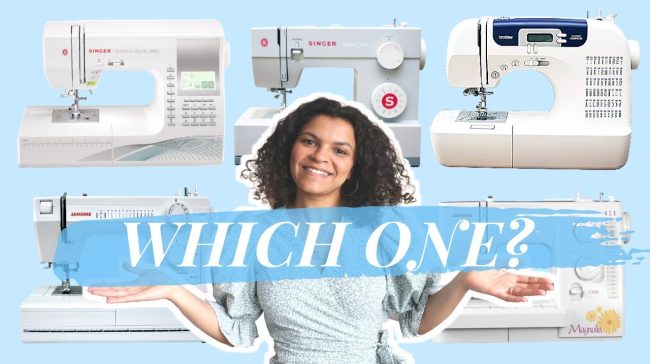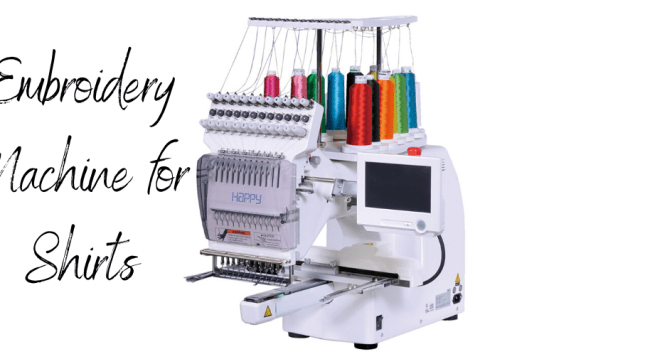


Table of Contents
Introduction
In the world of sewing,how do i choose a sewing machine? the right sewing machine can make a world of difference in your crafting endeavors. Whether you’re a beginner or an experienced seamstress, selecting the perfect sewing machine is crucial for achieving excellent results. This article aims to provide you with valuable insights and guidance on choosing the right sewing machine to meet your specific needs. We will explore various factors to consider, types of sewing machines available, key features to prioritize, and the importance of research before making a purchase.
I. Importance of Choosing the Right Sewing Machine
When it comes to sewing, the right machine is your faithful companion, helping you bring your creative ideas to life. A suitable sewing machine enhances your efficiency, accuracy, and overall sewing experience. It allows you to explore a wide range of projects, from simple repairs to intricate designs. Moreover, a well-suited machine ensures durability, saving you from potential frustrations and costly repairs in the long run.
II. Determine Your Sewing Needs
Before diving into the vast sea of sewing machine options, it’s important to assess your sewing needs and preferences.
A. Identify Your Sewing Projects
Consider the types of projects you will be working on. Will you primarily focus on basic repairs and alterations, or do you aspire to create intricate garments and accessories? Understanding your project requirements will help determine the necessary features and capabilities your sewing machine should possess.
B. Consider the Types of Fabrics You’ll Be Working With
Different fabrics require different handling. Determine the variety of fabrics you’ll be working with, such as lightweight materials, heavy fabrics, or delicate fabrics like silk. This consideration will guide you in selecting a sewing machine with appropriate features and settings to handle your chosen fabrics.
C. Determine the Frequency and Intensity of Your Sewing
Assess the frequency and intensity of your sewing activities. Are you an occasional sewist or a dedicated enthusiast? If you plan to sew frequently or engage in extensive projects, a robust and reliable machine with advanced features may be more suitable.
III. Types of Sewing Machines
Understanding the different types of sewing machines available will help narrow down your options and align them with your needs.
A. Mechanical Sewing Machines
1. Features and Benefits: Mechanical machines offer simplicity and durability. They are typically affordable and well-suited for beginners or those on a budget. Mechanical machines are reliable workhorses for everyday sewing tasks.
2. Limitations and Considerations: These machines often lack advanced features found in computerized models, such as automatic needle threading or built-in stitches. They may require manual adjustments for stitch length and width.
B. Computerized Sewing Machines
1. Features and Benefits: Computerized machines provide advanced functionality, precise stitching, and a wide array of built-in stitches. They offer convenience through features like automatic needle threading, adjustable stitch length and width, and programmable stitch patterns.
2. Limitations and Considerations: Computerized machines tend to be pricier and may require additional maintenance or repairs compared to mechanical models. They may also have a steeper learning curve for beginners.
C. Serger Machines
1. Features and Benefits: Serger machines specialize in finishing edges, creating professional-looking seams, and handling stretchy fabrics. They provide neat and secure stitch finishes, such as rolled hems and flatlocking.
2. Limitations and Considerations: Sergers are typically used in conjunction with a regular sewing machine and are not designed for general sewing purposes. They may require specialized thread and additional accessories. read about thier best product
IV. Key Features to Consider
When evaluating sewing machines, certain features should be prioritized based on your sewing needs and preferences.
A. Stitching Options and Versatility
Consider the range of stitches available on the machine. Basic stitches like straight stitch, zigzag stitch, and buttonhole stitch are essential, but additional decorative stitches and specialty stitches can expand your creative possibilities.
B. Speed and Motor Power
The machine’s speed and motor power determine how quickly and smoothly it can sew through various fabrics. A machine with adjustable speed settings is advantageous, as it allows for greater control and precision.
C. Built-in Features and Accessories
Evaluate the built-in features and accessories included with the machine. Look for features like automatic thread cutter, adjustable presser foot pressure, and a variety of presser feet. Having essential accessories included can save you money and provide convenience.
D. Ease of Use and User-Friendly Controls
Ensure that the machine’s controls and interface are intuitive and easy to navigate. User-friendly machines with clear labeling and ergonomic design make sewing more enjoyable, especially for beginners.
E. Durability and Warranty
Check the machine’s build quality and reputation for durability. A sturdy machine with a reliable warranty ensures that your investment will withstand the test of time.
V. Set Your Budget
Determining your budget range is crucial before embarking on the search for a sewing machine.
A. Determine Your Budget Range
Decide on a realistic budget based on your financial capacity and the value you place on the machine’s features and capabilities.
B. Research Prices and Compare Models
Research the prices of various sewing machines within your budget range. Make comparisons based on features, brand reputation, and customer reviews to identify the best options that align with your needs.
C. Consider Long-term Investment vs. Immediate Needs
Decide whether you are looking for a long-term investment or a machine to meet your immediate needs. Evaluating your sewing goals and aspirations will help you determine the level of investment you are willing to make.
VI. Read Reviews and Seek Recommendations
Gaining insights from other sewists and enthusiasts can greatly inform your decision-making process.
A. Read Customer Reviews Online
Browse online platforms and sewing forums to read reviews from individuals who have firsthand experience with the sewing machines you are considering. Look for recurring positive feedback and take note of any potential concerns.
B. Seek Recommendations from Sewing Enthusiasts or Experts
Consult experienced sewists, friends, or local sewing communities for their recommendations. They can provide valuable insights based on their personal experiences with different sewing machines.
C. Consider Reputable Brands and Their Reputation
Reputable brands often have a track record of producing quality sewing machines. Consider their reputation, customer support, and availability of spare parts when evaluating your options.
VII. Test and Evaluate the Machine
To ensure the sewing machine meets your expectations, it’s beneficial to test it firsthand.
A. Visit a Local Sewing Machine Store
Visit a local sewing machine store where you can physically examine and test various models. Interact with the machines, check their build quality, and assess their user-friendliness.
B. Request a Demonstration or Test Drive
Ask the store staff for a demonstration or a test drive. This allows you to observe the machine in action, test different stitches and features, and assess its performance and noise level.
C. Assess the Machine’s Performance, Noise Level, and Overall Feel
Pay attention to the machine’s performance, smoothness of operation, and noise level. Consider how comfortable you feel using the machine and if it aligns with your sewing preferences.
VIII. Consider After-sales Support and Service
Considering the availability of after-sales support and service is essential for a seamless sewing experience.
A. Research the Availability of Local Service Centers
Check if there are local service centers or authorized repair technicians available for the sewing machine brand you intend to purchase. This ensures prompt assistance in case of any technical issues or repairs.
B. Check Warranty Details and Customer Support Options
Review the warranty terms and conditions provided by the manufacturer. Understand the coverage, duration, and any additional services offered. Check the availability of customer support channels, such as phone or email, for easy access to assistance when needed.
IX. Make an Informed Decision
Compile your research and comparisons to make a well-informed decision.
A. Compile Your Research and Comparisons
Organize your findings, including features, prices, customer reviews, and any additional notes you have made during the evaluation process. This compilation serves as a valuable reference when making the final decision.
B. Prioritize Your Needs and Preferences
Reflect on your sewing needs, preferences, and priorities. Identify which features and capabilities are essential and which ones you can compromise on. This will help you prioritize your selection.
C. Consider the Overall Value for Your Investment
Evaluate the overall value you will receive from your chosen sewing machine. Consider factors such as durability, warranty coverage, included accessories, and customer support. Opt for a machine that offers the best balance of features, quality, and long-term value within your budget.
X. Purchase and Familiarize Yourself with the Machine
Once you have made your decision, it’s time to finalize the purchase and acquaint yourself with the sewing machine.
A. Finalize Your Decision and Make the Purchase
Make your purchase from a reputable retailer or authorized dealer. Ensure that you receive all necessary documentation, such as receipts and warranties, for future reference.
B. Read the User Manual and Familiarize Yourself with the Machine’s Features
Carefully read the user manual provided with the machine. Familiarize yourself with its features, settings, maintenance instructions, and safety precautions. Understanding the machine thoroughly will optimize your sewing experience.
C. Seek Additional Guidance or Training if Needed
If you require further guidance or training to maximize your sewing skills or explore advanced features, consider taking sewing classes, watching online tutorials, or joining sewing communities. This continuous learning process enhances your proficiency and creativity.
XI. Conclusion
Choosing the right sewing machine is paramount to a fulfilling and successful sewing journey. By investing time and effort in research, evaluating your needs, and understanding the available options, you can confidently select a sewing machine that aligns with your sewing aspirations. Remember to prioritize functionality, durability, and after-sales support, as they contribute to a satisfying and rewarding sewing experience. So take your time, do thorough research, and make an informed decision to embark on a fulfilling sewing adventure with the perfect sewing machine by your side.




